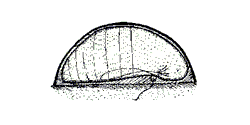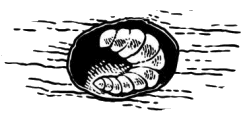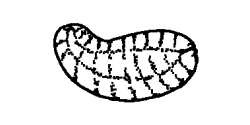Kwik-Key to Insect Orders
If you have reached this part of the key, your specimen is round or globular, has no head capsule, and lacks appendages of any kind. It is probably a scale insect or the larval stage of a gall insect.
The likely orders are:
Hemiptera
Scale insects
Most scale insects attach themselves to the leaf or stem of a plant and insert a thin feeding tube into the vascular tissue. Once settled, they secrete a hard or waxy shell (derm) that completely covers their body. Females remain in that position, growing slowing, for the rest of their lives. Only the males emerge as winged adults to mate with sessile females.

Hymenoptera
Gall wasps
Gall wasps are most commonly found living on oak trees (genus Quercus). The female deposits an egg into the host plant. When the egg hatches and the larva begins to feed, it triggers formation of a gall — a distinctive growth response of the host plant. The larva feeds within the gall, eventually pupates, and later emerges as an adult gall wasp.

Diptera
Gall flies
Gall flies live in the tissues of many types of plants – but generally NOT in oaks. Their life-cycle resembles that of gall wasps. Each species causes the development of a distinctive type of plant growth. Individual species are more easily recognized by the appearance of their galls than by any morphological features of the larvae or adults.

Copyright 2019, John R. Meyer, North Carolina State University
All rights reserved

